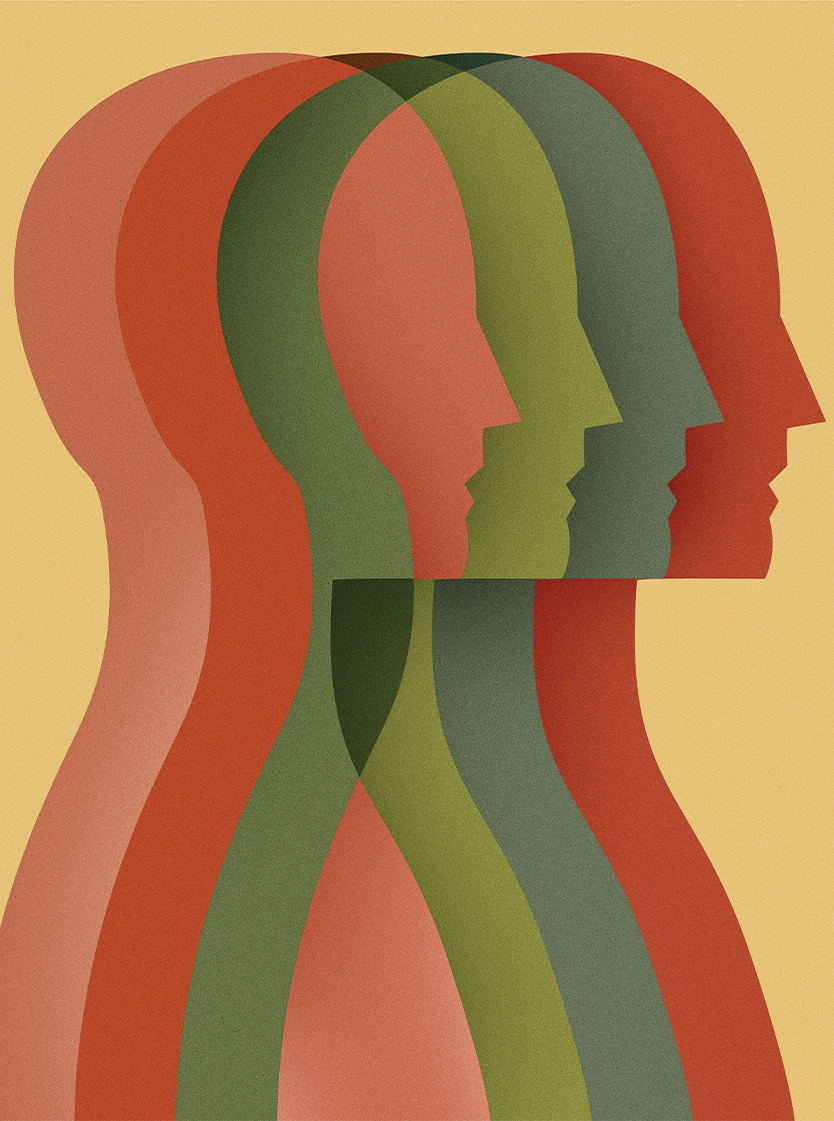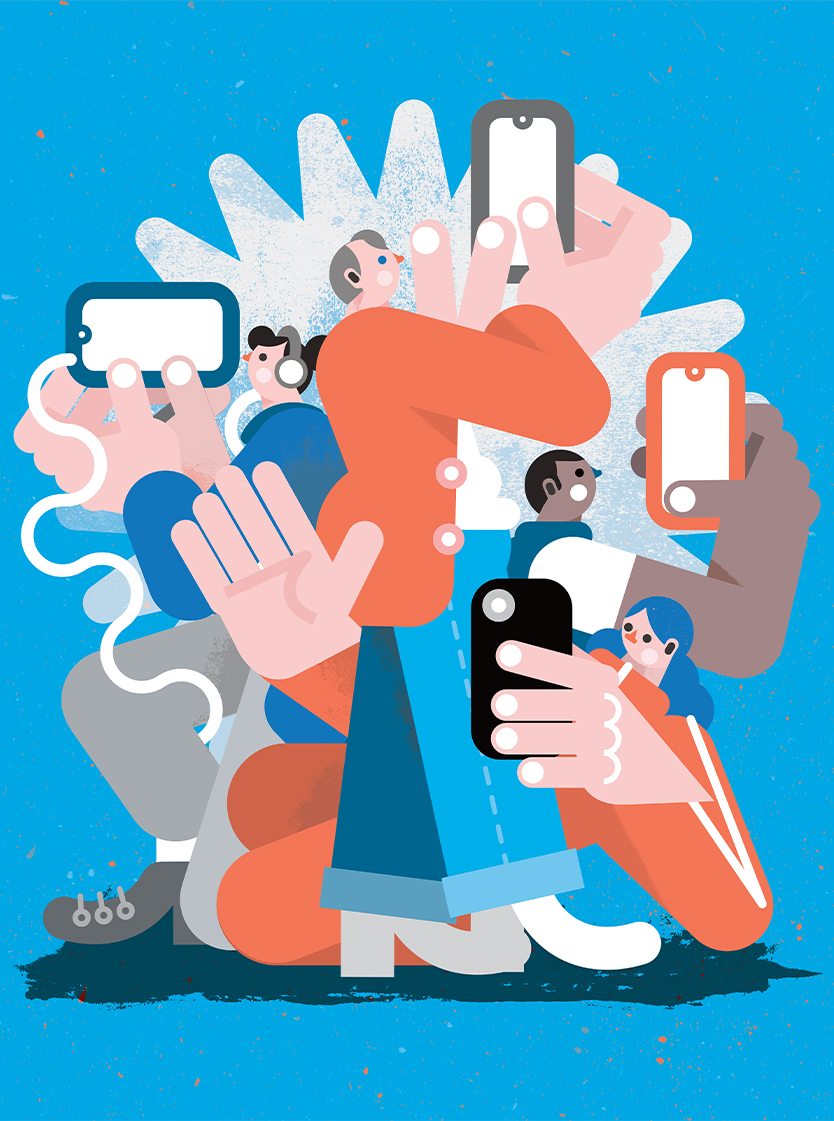The beauty of simple unseen rules
By Aza Raskin

Michael Mullan

The latest machine learning tools are the new invention of optics for our age, writes Aza Raskin. Together with his colleagues at the Earth Species Project, they are using these to find, understand, and ultimately translate non-human language.
The first time I went canoeing, I remember noticing a mysterious phenomenon no-one there could explain: as I pulled my paddle through the water two little whirlpools spun from its edges, spiraling away into the lake long after I pulled my paddle from the water.
What were they and how do they form?
It was trying to figure it out for myself that pulled me into a love for physics and maths: together, they give you a map by which you can work out the whys of the universe. You can find the same vortex in the eddies at the edges of streams, in the rising warmth of dust devils, in the dangerous air-rotors lurking behind cliffs. There are simple, unseen rules that govern everything. They’re gorgeous.
Metaphors are maps that preserve relationships. They help you understand one thing by borrowing your understanding of another. They let you understand something huge by understanding something small; something you can’t touch by something you can.
The better your maps, the deeper variety of things you can understand with what you already know. The deeper variety of things you know, the more your maps can teach you how the world is actually the same. By walking more territory and bettering your maps, you’ll find constant insight into whatever you care most about. These maps — your metaphors — help light the universe’s simple, unseen rules.
But, take care. Maps come with a warning. ‘The map’, it says, ‘is not the territory’. The menu is not the meal. The representation is not the thing it represents; some parts must be minimised to make others more visible. Maps clarify by obscuring.
A metaphor — as a map — is like a set of many arranged bulbs in a dark forest: the trees flush with light hide those in shadow. There is no way to see that isn’t also blind.
But moving between many maps and metaphors changes your perspective, moves the bulbs and their arrangement: lighting this way then that. Slowly — and sometimes all at once — you see patterns in what you can’t see. Truth is a process; more of a verb than a noun.
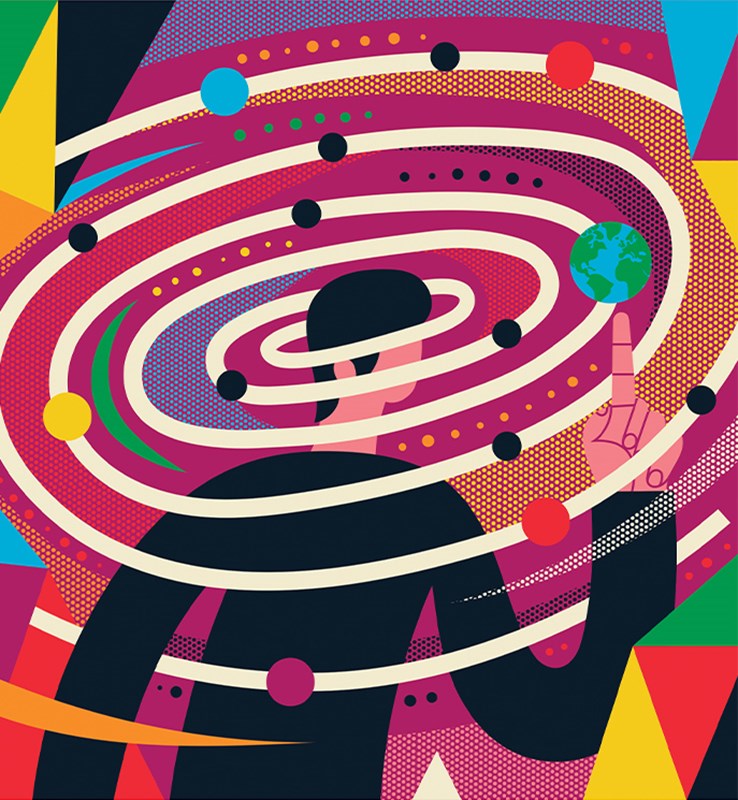
The entire exterior surface of ants are covered in communication. Their external-most layer is no deeper than the width of a single dropping of a single dust mite, but holds a library telling health and fertility, excitement, fear, age, belonging, and tribe. Hydrocarbons. They are deposited as billowing stepping stones, creating a flow of Morse-code clouds, buffeted by air molecules, showing the way like flickering candles at the edge of the sea. This way: food. That way: peril. All together: cognition. The paths are collectively tended epistemology. A library tap-etched at the surface of the world.
Hydrocarbons structure the human world, too. Where we go, how we get there... which societies dominate which societies. Oil and gas have drawn pheromones trails through our human history.
Bees use hydrocarbons, but cannot leave deposits mid-flight to show the way. As they fly, bees gather electric charge, hairs and wings rubbing, decorating their bodies with packed electrons plucked from the air. When they return, their knowledge of the world is shared in Tanzsprache — an eruption of smell and electricity, direction and duration. They sound their excitement, the displacement of air vibrating their fellow bees in dancing electric potential. The dance-language tells the others of their own coming journey: in which direction to fly and how far — though when food is plentiful (and like much other dance) once observed, it is ignored. Perhaps, in abundance, it’s not for the others that the bees dance, but for themselves. Lars Chittka, decorated ethologist, has seen them night dance far from the forages of the day. Perhaps they dream, dancing with landscapes conjured from within themselves.
For ants, with their dotted paths, how precisely do they speak — say of direction? Their angular resolution can be measured. In experiments, they discern the difference of up to 16 directions. For bees, with their dance? In experiments, they too discern the difference of 16 directions. And humans, with our language, how many directions do we discern? North, east, south, and west. East by northeast. South by southwest. Four times two times two: we also speak in 16 directions.
Pheromones, Dance, and Language: all lighting a simple, unseen rule of the universe.
“What we are building is a perspective-changing machine”
Aza Raskin
I am one of the co-founders of the Earth Species Project. We are translating animal communication using the tools of modern machine learning and the data from new scales of sensors. Our goal is to find, understand, and ultimately translate non-human language. We are working with dolphins, whales, elephants, and primates; with biologists and researchers from global institutions like Cornell, Imperial College, Simons Institute, University of Oxford, MIT, UC Davis, MBARI, Woods Hole Oceanographic, and the Jane Goodall Institute.
There was a startling breakthrough in AI at the end of 2017: the ability to translate between languages without needing to know the languages or have any examples of how to translate. Until you know how it’s done, it seems fantastical in that Arthur C Clarke sense of “any technology sufficiently advanced being indistinguishable from magic”. After you know how it’s done, it is staggering in its simplicity. It was that breakthrough that ignited the Earth Species Project into existence.
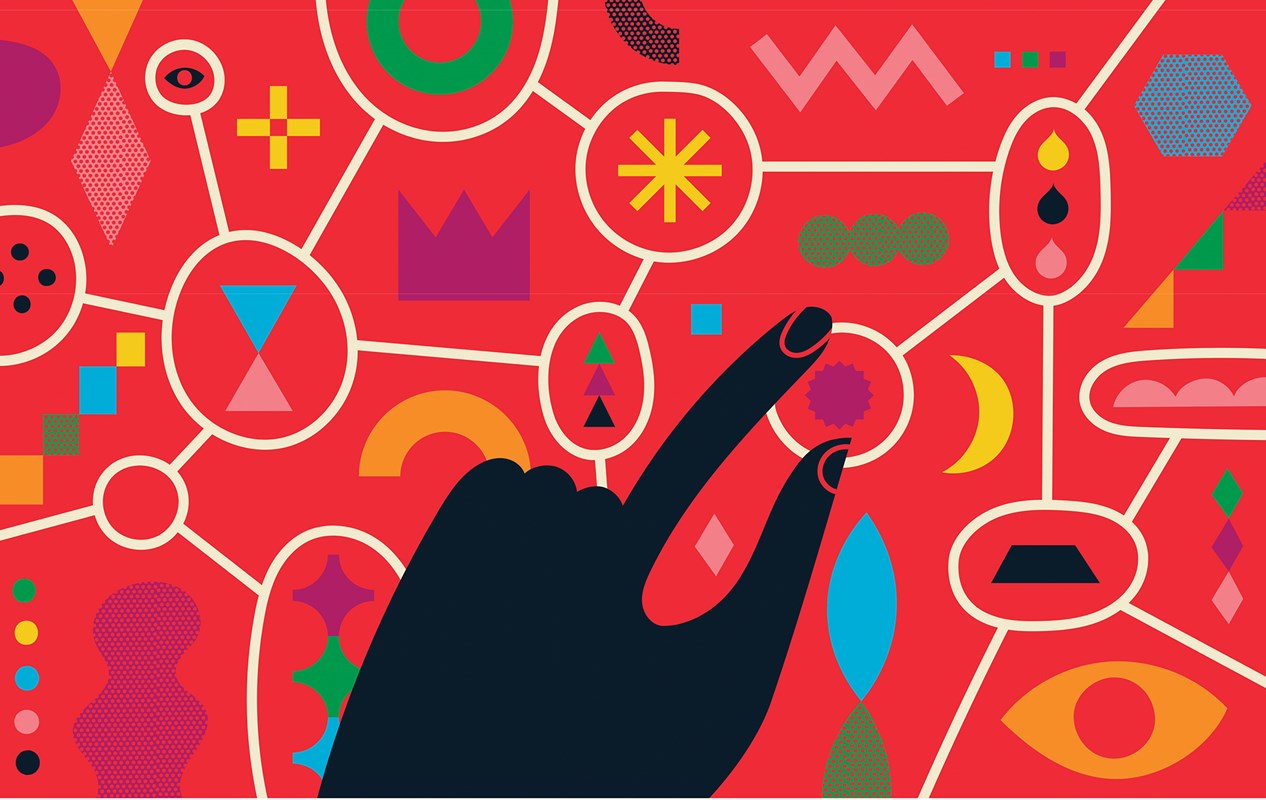
Imagine language as a galaxy, where each word is a star. In this galaxy two things are true. One, stars whose words mean similar things are near each other; and two, the distance and direction between stars represents the relationship between their words.
One means that near the star for cat you’ll find the star for feline; and that near the star for smelly you’ll find the star for stinky and malodorous.
Two is a little more tricky, and it means that analogies are geometric. Cat is to feline as dog is to canine. So, if you go the same distance and direction that feline is from cat but starting at dog, you’ll arrive near canine.
What’s interesting about these shapes is that each language is by-and-large a specific shape. To build the shape, the AI is solving a kind of complex, multi-dimensional sudoku puzzle.
Consider the concept of dog. It has a relationship to man, to wolf, to fur, to cat and many more. All of these relationships constrain its position to a small volume of space. Most concepts are, in fact, related to many other concepts and so they also get constrained in a small volume of space. Solve for all of these constraints at once, and out pops a shape. The shape of language.
The breakthrough in 2017 was the realisation that the shapes of different languages were actually very similar. The researchers had found a way to align the shape of languages, and once you did, the star for dog and the star for love and the star for life were in roughly the same spots for all those languages. The shape for Japanese aligns with the shape for German, which aligns with the shape for Finnish, and Esperanto, and Turkish, Arabic, and Aramaic. Human languages fit a universal meaning shape. Each language becomes a potential key to every other language’s lock.
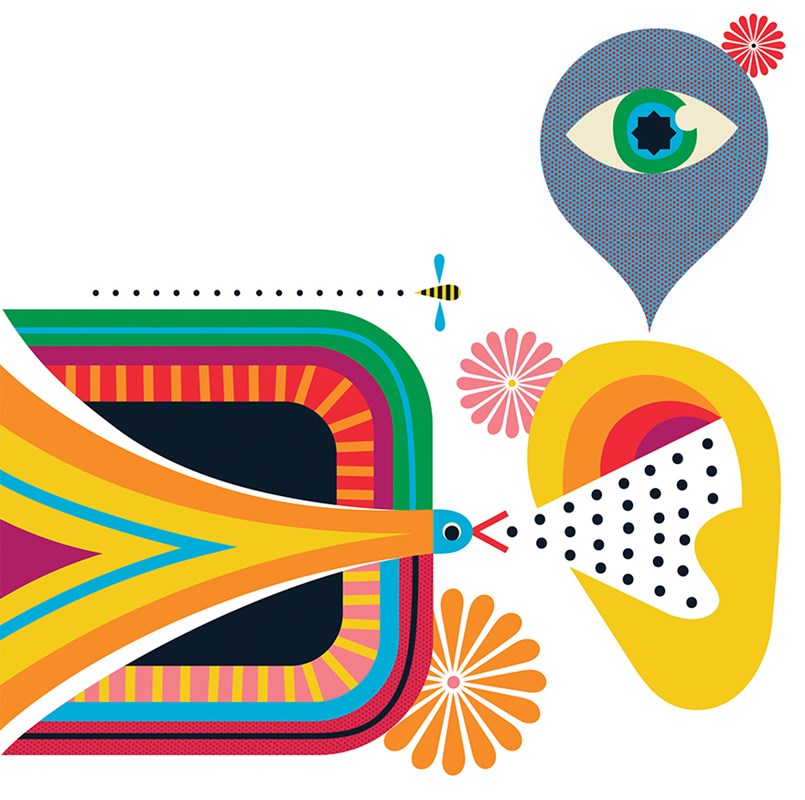
In a time of such polarised division, quietly, beneath all our arguments and differences, is a hidden structure uniting us all.
We are now working on being able to make these shapes directly from bioacoustics recordings, so that we can compare the shape of human language to the shape of animal communication. So that we can see what dolphins teach us about orcas teach us about humpbacks teach us about elephants teach us about bats teach us about us. We can compare the cultural dialects of whales, or of bonobos in captivity to those in the wild.
Each species’s shape is a world-view — a crystallised glimpse into what it is like to be that being. The mapping between them, a calculable metaphor. What we are building is a perspective-changing machine. Imagine what we might find: humans have been communicating with something language-like for maybe 60,000 years, dolphins for 40 million.
“These new machine learning tools are the new invention of optics for our age”
Aza Raskin
Discovered at the University of Tel Aviv in 2019, the rhythmic beat of a bee’s wings vibrates the petals of an evening primrose from afar, and the flower reacts: gets excited, gushing with more and sweetened nectar. Flowers can hear. Plants make sound, too. That same lab in Tel Aviv discovered that both tobacco and tomato plants emit ultrasonics when hurt: cut or dehydrated. The greater the distress the greater the screams. And not quietly. If only our ears could hear that, we would be bathed in the sound of fields at the volume of humans speaking.
Our ability to understand is limited by our ability to perceive. What else can we not perceive? These new machine learning tools are the new invention of optics for our age.
Optics created the microscope. Suddenly, beings were made of cells with inner workings; and bacteria, unknown before, were everywhere on everything. Darwin’s protégée Ernst Haeckel, spent years with one eye looking through the microscope, the other painting the vivid geometric beauty of the microscopic world. His collected works became ‘Art Forms of Nature’ and birthed the Art Nouveau movement.
Optics created the telescope. Suddenly, we saw that Earth was not the centre, that the Universe was far larger than humanity had even the imagination to conceptualise.
Optics gave us our first measurement of the speed of light, the clues to gravity’s workings, and the ability to calculate the age of the Universe.
Optics changed how we see, the perspectives from which we can see, they changed us. They changed everything.
There are simple, unseen rules and they’re gorgeous.



